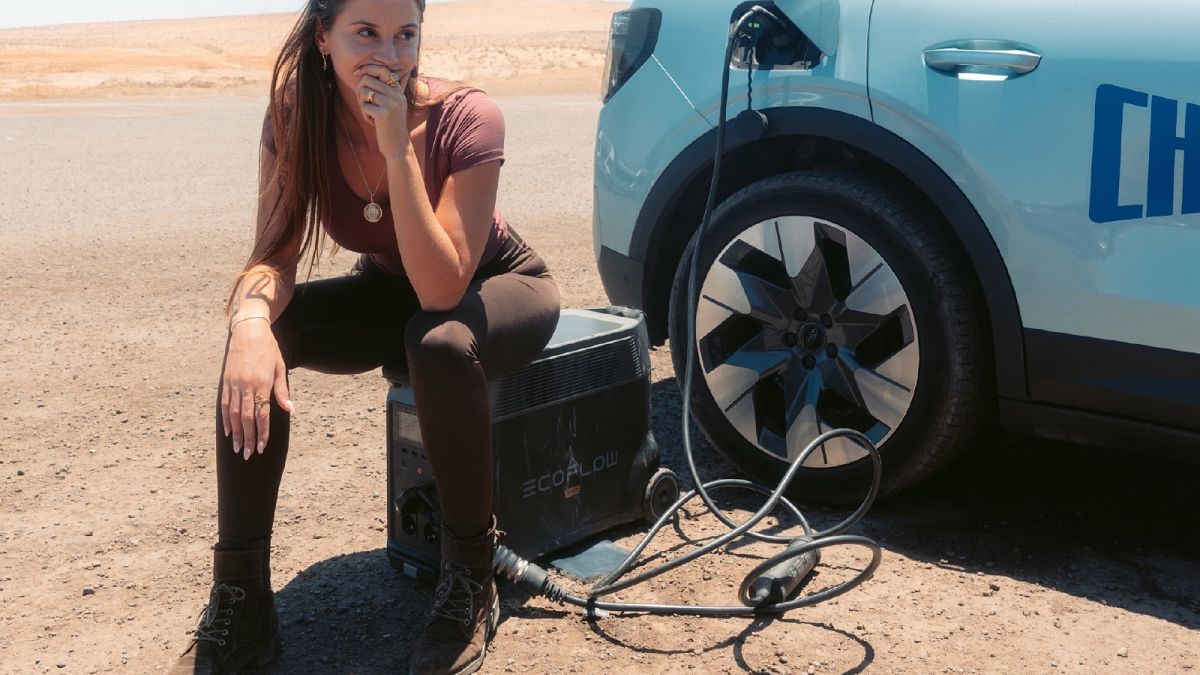Fashion
Are Fashion Companies Cutting and Running From Bangladesh?

Only a handful of Bangladesh’s top apparel buyers have explicitly said that they will neither impose financial penalties nor shift sourcing away from the country due to supply chain disruptions triggered by recent crises, most of all a student-protest-turned-democratic-uprising that dramatically ejected Prime Minister Sheikh Hasina’s regime and installed a caretaker government in its place.
These include Aldi South, H&M Group, OVS, Puma, Calvin Klein and Tommy Hilfiger owner PVH Corp. and The North Face parent VF Corp.
Other brands and retailers were less unequivocal. Bestseller, C&A and Ikea only confirmed that they would not be seeking discounts or chargebacks due to delayed deliveries or canceling existing orders. Levi Strauss & Co. said that Bangladesh remains an important sourcing country and that it has not experienced significant sourcing or shipping disruptions “up to this point.” Primark also highlighted the South Asian nation’s importance but did not make a clear commitment about order levels, and Uniqlo owner Fast Retailing said that it doesn’t cancel orders that have been placed or change delivery or payment dates without a factory’s prior consent.
Still others, including Aldi North, Asda, The Children’s Place, Cotton On, Gap Inc., Esprit, Kmart Australia, Kohl’s, Lidl, Wrangler owner Kontoor Brands, Mango, Marks & Spencer, Matalan, Next, Target Australia, Target, Tesco, T.J. Maxx operator TJX, Tom Tailor, Walmart and Zara owner Inditex, did not respond to requests for comment.
It was only a month ago that Hasina, in her last gasp to maintain power, had deployed security and paramilitary forces to violently crack down on demonstrators as their initial demands to end quotas for public-sector jobs escalated into a broader reckoning about the Awami League’s increasingly autocratic rule. A nationwide curfew with an order to “shoot on sight,” coupled with an extended communications blackout, only succeeded in cutting Bangladesh—and the garment factories that account for some 85 percent of its $55 billion in annual exports—from the rest of the world.
The apparel sector was losing an estimated $150 million a day, SM Mannan Kochi, the Bangladesh Garment Manufacturers and Exporters Association’s then-president said at the time. But he said that a bigger problem was the possibility that international brands and retailers were “losing confidence” in Bangladesh’s ability to deliver shipments on time with both back-to-school and the all-important holiday season looming. “[It’s] a loss whose value can’t be gauged with just money as it will have a long-term negative impact on the country’s most valuable industry,” Kochi said.
Now, coupled with further delays caused by flooding that has submerged Chittagong Port, which handles 95 percent of Bangladesh’s clothing exports, those fears are coming into focus. Western buyers don’t typically own their own factories, instead weighing and choosing from an à la carte menu of independent manufacturers across the globe that suit their requirements, including cost, speed to market, manufacturing capability, minimum order quantities and tolerance for social and environmental risk. This also means that brands and retailers aren’t beholden to any specific supplier—or any country for that matter.
“Like it or not, no sourcing destination is ‘perfect’ and excels in all criteria,” said Sheng Lu, professor of fashion and apparel studies at the University of Delaware. “This explains why sourcing diversification has increasingly become a necessary and popular practice among U.S. fashion companies.”
With its cheap and plentiful labor, duty-free access in Canada, the European Union and the United Kingdom and, until recently, relative geopolitical stability bolstered by post-Rana Plaza safety reforms, Bangladesh fit neatly within many brands and retailers’ “China plus one” sourcing strategies. Favorable market-oriented policies under Hasina’s regime, including heavy infrastructure investment and the creation of export processing zones, supercharged its growth into the world’s second-largest exporter of clothing after China. But the country’s competitive advantage with cotton apparel has also been its Achilles heel.
“Bangladesh is not among the top choices for sourcing woven apparel using non-cotton fibers,” Lu said. “Bangladesh also lags behind China and Vietnam in terms of product diversification and production flexibility due to the lack of a vertically integrated local supply chain. As U.S. consumers purchase fewer clothing items but expect more trendy, fashionable, and customized products, Bangladesh’s apparel exports to the U.S. have struggled in recent months.”
Already, a July benchmarking study from the U.S. Fashion Industry Association, which Lu helped conduct, found that only 48 percent of American brands and retailers planned to increase their sourcing from Bangladesh over the next two years, a step down from 58 percent in 2022, though this was also due what respondents described as the high social compliance risks of sourcing from the nation.
The unrest could cause the industry further destabilization. Last week, nine multi-stakeholder organizations representing more than 3,000 companies, including Amfiori, Cascale, the Ethical Trading Initiative, the Fair Labor Association and the Fair Wear Foundation, published a joint letter urging businesses operating in and sourcing from Bangladesh to “conduct business responsibly.”
“We recommend that companies honor their commitments to suppliers, conduct enhanced human rights due diligence and implement responsible purchasing practices to prevent and mitigate adverse impacts on workers and supply chains,” the organizations said. “Collaborative partnerships are the best foundation for responsible purchasing practices and for decent working conditions in supply chains worldwide.”
But platitudes in place of specific commitments ring hollow, said Liana Foxvog, director of supply chain strategies at the Worker Rights Consortium, a nonprofit based in Washington D.C. Not only have brands and retailers “tolerated” the anti-labor rights actions of the former government, she said, but they also “actively benefited” from them as recently as last October and November, when garment workers faced a similar government response over their protests for a higher minimum wage.
“This kind of repression is what was viewed as ‘stability’ for the garment industry: a reliance on the long arm of the state to repress workers’ rights,” she said. “At this pivotal moment, if brands are not able to publicly state that they will not impose penalties and that they commit to sustain their volume of orders, it will be a heinous betrayal of millions of garment workers at the moment when the nation finally has the opportunity to transition to democracy and less-repressive working conditions.”
The least buyers can do now is “publicly, proudly sustain their commitments to source from Bangladesh,” Foxvog added.
Still, Miran Ali, vice president of the BGMEA and managing director of the Bitopi Group and Tarasima Apparels, said that that he has seen no drop in business—nor does he expect a long-term decline.
“On the contrary, once this initial settlement phase is completed, I see a massive upsurge in the country’s reputation,” he said of the transition to a new democratic government. “In a very short period, we are going to go from a country which is generally an embarrassment for people to be working in—you work in Bangladesh because it’s low price or whatever—to one where it’s a beacon of human rights, fairness and social justice. That’s a whole different narrative that we’re going to be building.”
Even so, what brands and retailers decide to do next will undoubtedly have a knock-on effect on the predominantly female workforce that makes their products, said Ayesha Barenblat, founder and CEO of Remake, a fashion advocacy group. With soaring inflation jacking up the prices of everything from food to medicine, any sudden reduction in workload without an increase in compensation will only add to their already substantial financial burden.
On Tuesday the BGMEA asked the interim government for a soft loan of 1,900 crore Bangladeshi taka ($159 million), to be repaid in six installments, to help its members recover from the losses due to the protests and flooding. This would also allow them to pay their workers for August after struggling to meet July wages because of shuttered banks, the trade group said.
But while most workers have been paid in full, including for the time the factories were closed—VF Corp. confirmed that all its suppliers have done so—this is cold comfort, said Barenblat. The reason garment workers were agitating last year was because the minimum wage hasn’t kept pace with the cost of living. The prices that brands and retailers have negotiated for items such as T-shirts and trousers, too, have stagnated over the past decade, according to BGMEA data.
“Workers were already grappling with wages far below a life of dignity with FOB prices having remained flat and are now on the frontlines of this unfolding crisis,” she said, using an acronym for free on board, the point where a shipment is loaded onto a vessel for transportation to the buyer. “Now, more than ever, brands and retailers must show solidarity with their Bangladeshi worker partners.”









